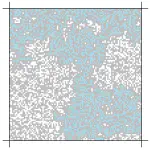Hazardous & Benign Objects: Getting the Data
The recent story about a skydiver nearly being hit by falling meteor got me thinking about all the pieces of rock floating around in near-Earth space. Despite the fact that the supposed meteor was probably just a chunk of rock mistakenly packed in with a parachute, the fact that something like that could actually happen is quite intriguing. And not a little frightening.
Read More →